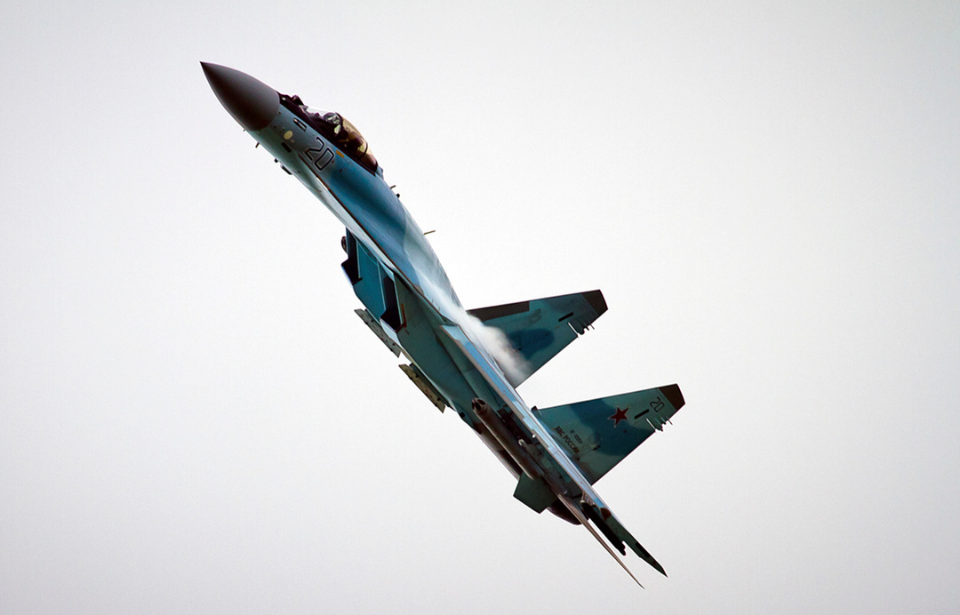The Sukhoi Su-35 stands as a testament to Russia’s relentless pursuit of aerial dominance. This advanced, super-maneuverable, fourth-generation fighter jet has not only captured the attention of military analysts, but also stirred discussions among aviation enthusiasts worldwide – despite seeing limited combat service.
Deriving from the Sukhoi Su-27
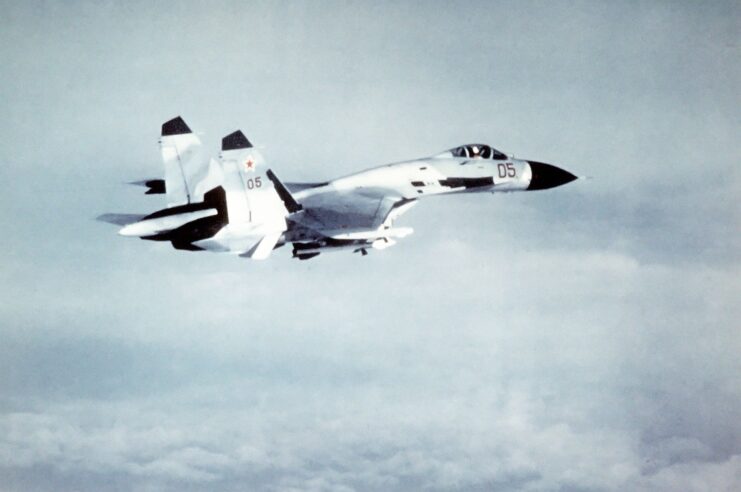
The Su-35 is the culmination of Soviet and Russian fighter aircraft design. Its roots can be traced back to the Sukhoi Su-27, which underwent its first flight in May 1977. Developed to rival the American-produced McDonnell Douglas F-15 Eagle and Grumman F-14 Tomcat, the multirole fighter was capable of conducting extensive aerial warfare. This was crucial for the Soviets, who feared just what the Americans could accomplish with their newer aircraft.
Several aircraft have been developed based on the overall design of the Su-27. The Su-35, as aforementioned, as well as the Sukhoi Su-34, a twin-seater fighter-bomber, and Su-37, a thrust-vectoring variant. The Shenyang J-11, operated by China’s People’s Liberation Army Air Force (PLAAF) and Naval Air Force (PLANAF), can also trace its routes back to the fighter.
Upgrades give the Sukhoi Su-35 a lethal edge in aerial combat
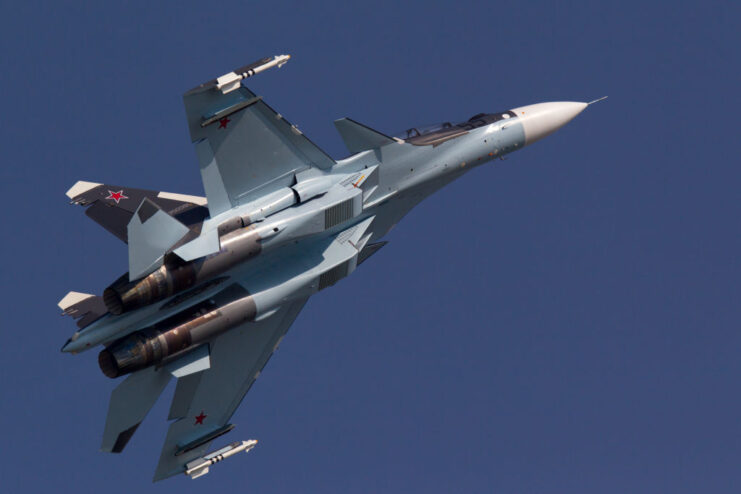
The Su-35 has undergone significant refinements, including a redesigned airframe with a glass cockpit, improved engines and the introduction of state-of-the-art avionics, including a brand-new weapons-control system. These enhancements have solidified its reputation as a highly agile and potent aircraft, capable of executing complex maneuvers that few others in its class can match.
Originally introduced into service as the Su-27M, the fighter was redesignated “Su-35” following the collapse of the Soviet Union and presented as such in overseas demonstrations. Modernization work began in 2002 and took a few years to get right, with pilots and engineers discovering issues with many of the changes made to the aircraft – in particular, a loss of maneuverability and problems deploying munitions.
After much reworking, the Sukhoi team was able to put together redesigned systems and a new cockpit, making the Su-35 a lethal aircraft. Equipped with the powerful N035 Irbis-E passive electronically scanned array (PESA) radar and a variety of sensors, the fighter is designed for long-range detection and tracking. It’s also capable of staying hidden on radar, thanks to the use of radar-absorbent materials and the L175M Khibiny-M electronic countermeasure system, and has advanced jammers.
Sukhoi Su-35 specs.
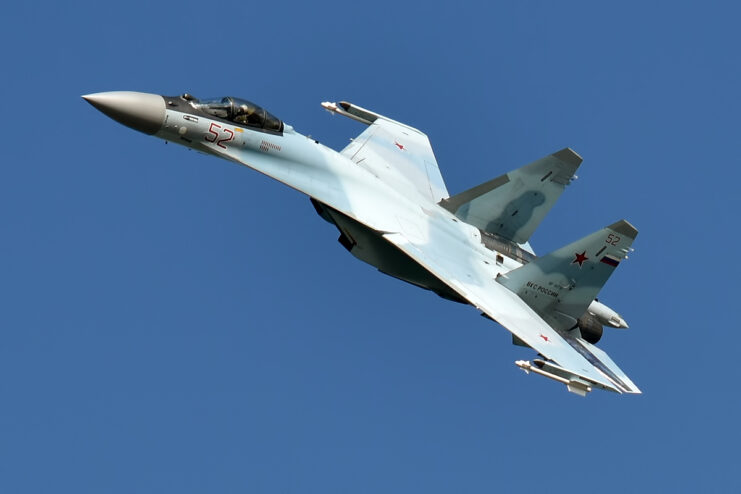
The Su-35 is a one-seater multirole fighter that’s powered by two Saturn AL-41FS after-burning turbofan engines that allow it to hit a top speed of Mach 2.25 and a cruising speed of Mach 1.1. In terms of range, it can fly 2,200 miles at altitude and 982 miles at sea level, with a combat range of 990 miles.
The aircraft’s arsenal includes an array of precision-guided munitions; air-to-air, air-to-surface, anti-radiation and anti-ship missiles; and the potent 30 mm Gryazev-Shipunov Gsh-30-1 autocannon, enabling it to engage multiple threats with precision and efficiency. The former are carried across 12 hardpoints with enough strength to hold over 17,600 pounds of ordnance.
There are several Sukhoi Su-35 variants
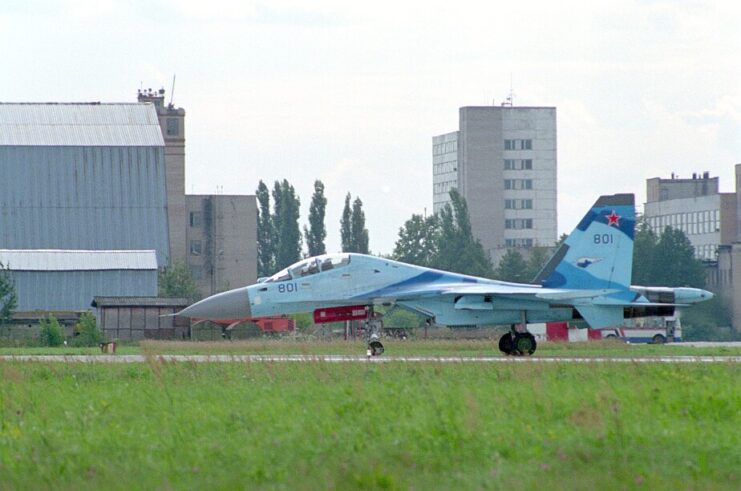
Several variants of the Su-35 have been developed over the years, with the most notable being the Su-35S. It’s the most advanced version of the aircraft available, with an adept weapons system and the ability to maneuver at 9 g – in other words, it can hold its own in a dogfight.
The other variants worth mentioning are the Su-35BM, known for being the most different from the Su-27, and the Su-35UB, a two-seater version. Only one of the latter was developed, to be a trainer aircraft, while the former featured a host of changes, including a modified airframe, no canards, new radar and engines that give it the ability to “supercruise” – reach and maintain supersonic speed without using an afterburner.
Taking to the skies with the Russian Aerospace Forces
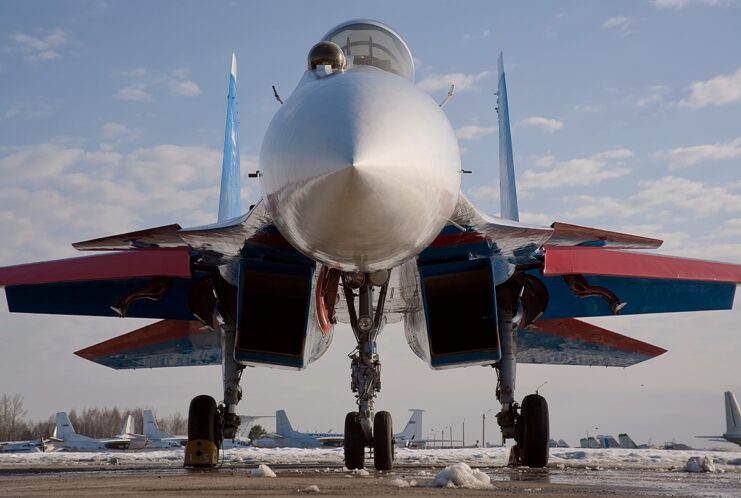
While the Su-35 hasn’t been extensively tested in high-intensity conflicts, given it only entered service with the Russian Aerospace Forces in 2014, its combat potential has been demonstrated in various regional engagements and exercises. In January 2016, the “S” and “SM” variants were deployed to Syria as part of Russia’s military intervention during the country’s ongoing civil war. The Su-35S aircraft provided air support, with the Su-35SMs tasked with combat air patrols.
Since the Russian invasion of Ukraine in February 2022, the Su-35 has played a key role in the former’s air superiority throughout the conflict. That being said, the Ukrainians haven’t taken the attacks laying down. Several of the fighters have been shot down by ground forces. One was even reportedly taken out by its own S-300 surface-to-air missile in September 2023.
More from us: A US Air Force Stealth Bomber Was Once Caught Mid-Flight On Google Maps
Outside of Russia, there have been repeated attempts to export the Su-35, with little success. China remains the only international operator of the aircraft, with 24 stationed at Suixi Air Base, in Guangdong. However, it was reported in November 2023 that Iran had finalized a deal to purchase the Su-35, along with the Yakelov Yak-130 trainer and the Mil Mi-28 attack helicopter.
